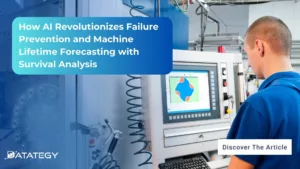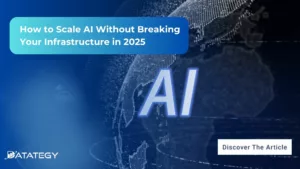Why AIOps Is Key to Cyber Threat Detection in Defense?...
Read MoreThe Rise of Humanoid Robots: Progress and Challenges
Table of Contents
ToggleSome humanoid robots are still in the testing phase. A few have already been used for various tasks. These tasks include deep-sea diving, bartending, working as concierge, and providing companionship for elderly individuals. The robots were used for these tasks after completing research and development.
Some robots support people in manufacturing and logistics by working in factories and warehouses. Others, on the other hand, seem to provide more excitement and novelty than anything else; they lead orchestras and meet attendees at conferences.
The manufacturing cost of humanoid robots has dropped significantly, with a range of $30,000 to $150,000 per unit now, compared to an estimated range of $50,000 to $250,000 last year.
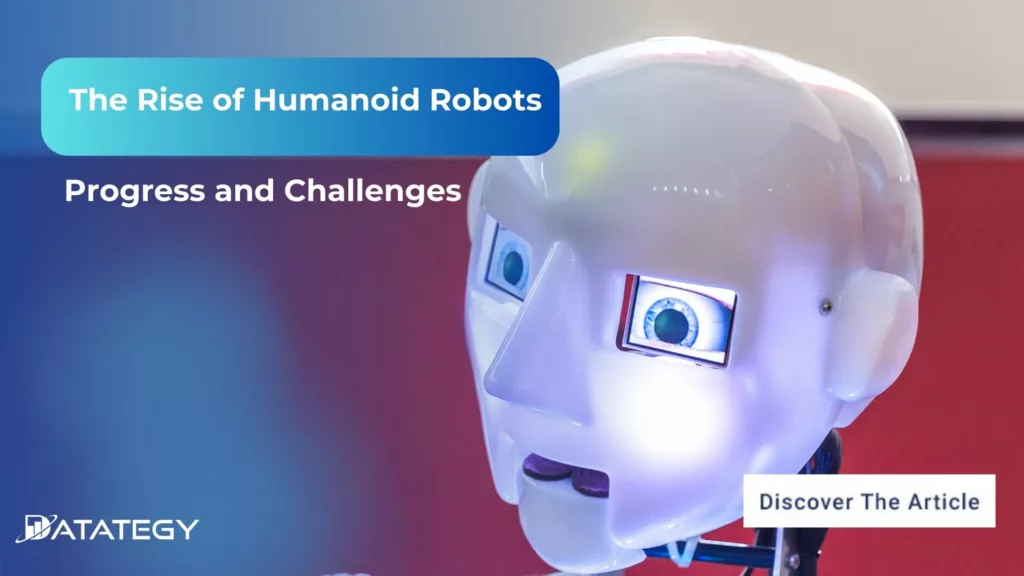
In this article, we’ll look at the roles of humanoid robots in real life and take a look at some of the most popular.
Humanoid Robotics: A Historical Overview
Mechanical Automata: Mechanical automata first appeared as early prototypes of humanoid robots during the Renaissance and the ensuing industrialization era. Automatons designed by engineers such as Jacques de Vaucanson and Nikola Tesla demonstrated fundamental human-like actions, such walking or carrying out simple chores.
The first robots that mimic human movements were Vaucanson’s mechanical duck, which could flap its wings and feed, and Tesla’s remote-controlled boat. Despite being constrained by the mechanical technology available at the time, these inventions aroused public interest and set the stage for future research into humanoid robots.
Electro-Mechanical Robots: Significant advances in electro-mechanical technology during the 20th century paved the way for the development of increasingly complex humanoid robots. ELEKTRO, which was on display at the 1940 World’s Fair, and Elektro, which was first presented at the 1939 World’s Fair, are two early instances.
These robots, which were mainly mechanical but had some movement and basic voice synthesis, captivated audiences and showed the possibility of a human-robot connection. However, humanoid robots would not take off until much later in the century, with the development of computing technology.
Early Robotics Research: As computing and artificial intelligence technologies advanced in the middle to late 20th century, robotics research grew quickly. Humanoid robot prototypes were being experimented with by laboratories and institutions all around the world, with an emphasis on issues including interaction with the environment, sensory perception, and movement. Bipedal locomotion was studied from a variety of angles, including passive walking mechanisms and more dynamic and adaptive systems.
Robots can now observe and react to their environment thanks to the development of sensory perception and feedback systems, which pave the way for further improvements in autonomy and interaction capabilities. Early humanoid robots were mostly experimental and distant from useful uses in real-world situations, despite tremendous advancements.
The Contribution of Honda and ASIMO: The launch of Honda’s Advanced Step in Innovative Mobility (ASIMO) in 2000 marked one of the most important turning points in the history of humanoid robots. With its display of previously unheard-of improvements in bipedal movement, dexterity, and interaction skills, ASIMO showed off the possibility for humanoid robots to carry out activities in everyday settings.
With its amazing agility and movement, ASIMO was able to walk, run, climb stairs, and even serve drinks—a degree of humanoid robot mobility never before seen. Honda made a substantial advancement in the field of humanoid robots with its contributions, which encouraged more study and advancement in the area.
Developments in Humanoid Robot Architecture
Since its founding in 1992, Boston Dynamics has led the way in developing the mobility of humanoid robots. Their humanoid robot prototypes, like Atlas, have shown exceptional dynamic balance, agility, and robustness, allowing them to precisely negotiate difficult terrain and carry out difficult jobs.
In instance, Atlas has demonstrated motions like sprinting, jumping, and even backflips, pushing the limits of what is physically possible for humanoid robots in terms of mobility. The future of humanoid robots has been greatly influenced by Boston Dynamics’ efforts, which have encouraged scientists and engineers to investigate novel concepts in locomotion and mobility on a global scale.
Top 5 Humanoid Robots in Use Right Now
DIGIT (AGILITY ROBOTICS)
Agility Robotics’ Digit is a ground-breaking advancement in the field of robotics, especially in terms of its ability to move and walk on two feet. With two legs, arms, and a torso, Digit’s remarkably human-like body allows it to navigate a variety of challenging surroundings with impressive agility and grace. Digit stands at around four feet tall. Because of its small size and robust construction, it can go through tight areas, up stairs, and over uneven terrain with elegance, making it incredibly adaptable and useful for a wide range of scenarios.
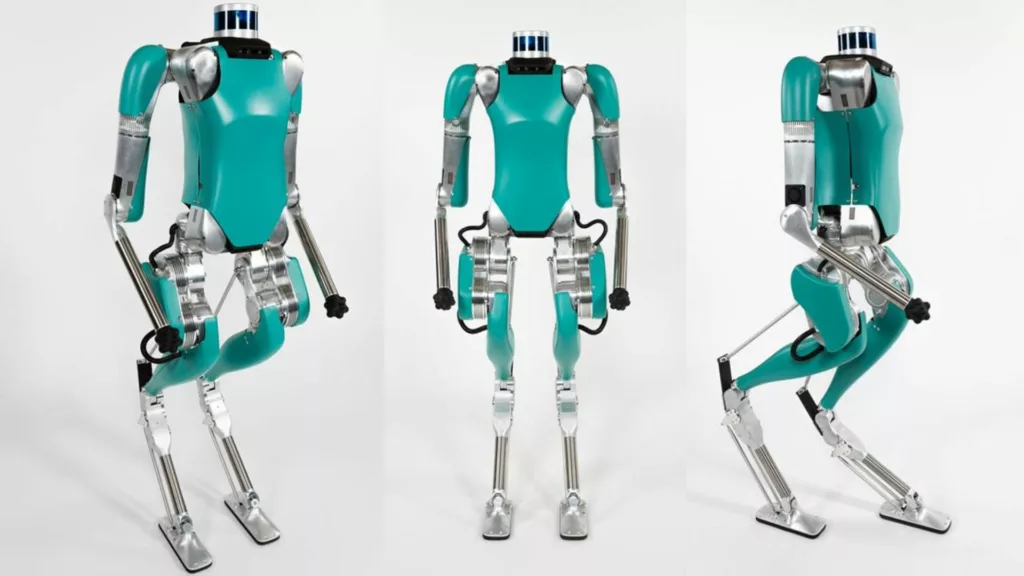
JIAJIA (UNIVERSITY OF SCIENCE AND TECHNOLOGY OF CHINA)
Jiajia is the inaugural humanoid robot to originate from China, engineered by researchers at the University of Science and Technology of China. The development of Jiajia spanned over a period of three years. During Jiajia’s unveiling in 2016, Chen Xiaoping, the leader of the team responsible for the humanoid robot, informed journalists that they are planning to equip Jiajia with the capability to express emotions such as laughter and tears, as reported by the Independent. The robot’s human-like appearance was allegedly designed by five students from USTC, as per Mashable.

ALTER 3 (OSAKA UNIVERSITY AND MIXI)
ALTER 3 is fundamentally an engineering wonder, with an advanced array of hardware and software components. With its sophisticated sensors, strong computing units, and precise actuators, ALTER 3 is incredibly nimble and dexterous, allowing it to move around its surroundings and manipulate items with ease. Because of its extensive awareness of its surroundings thanks to its sensory systems, ALTER 3 is able to perceive and react to stimuli with efficiency and precision comparable to that of a person.
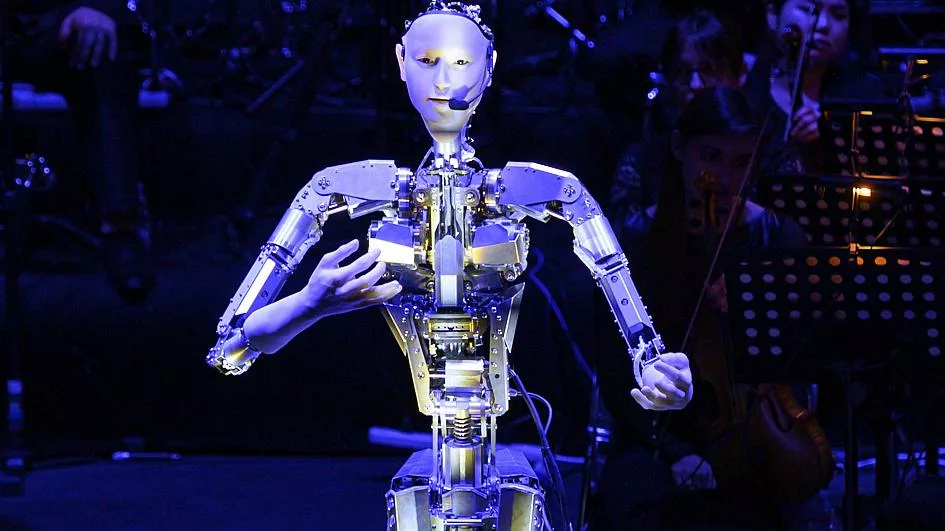
ARMAR-6 (KARLSRUHE INSTITUTE OF TECHNOLOGY)
German researchers at the Karlsruhe Institute of Technology created the humanoid robot ARMAR-6 to operate in industrial environments. In addition to having the ability to use tools like hammers and drills, ARMAR-6 has artificial intelligence (AI) technology that enables it to pick up things and pass them to human coworkers. In addition, it can do maintenance tasks like cleaning surfaces and can even call for assistance when necessary.
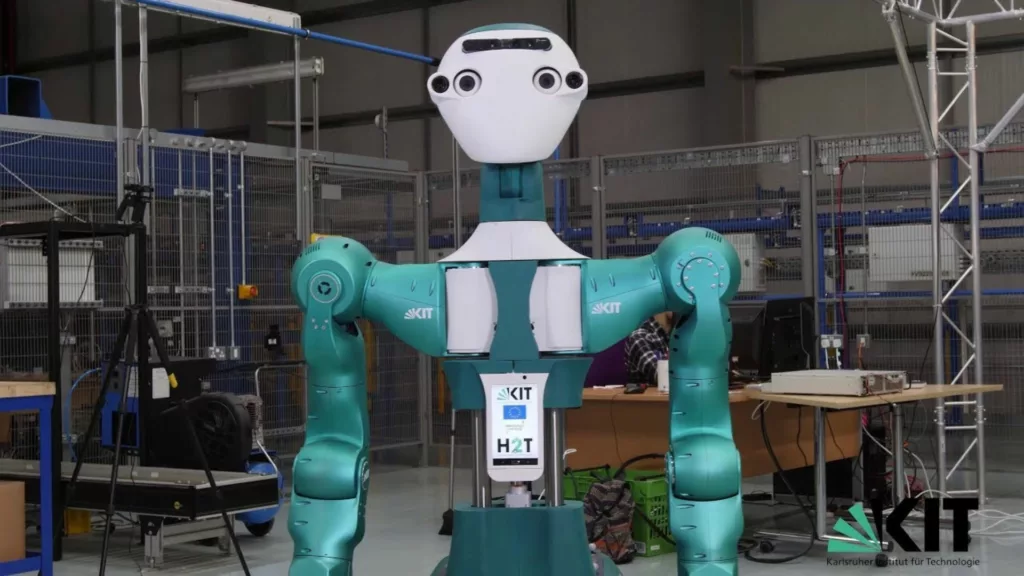
PEPPER (SOFTBANK ROBOTICS)
Another humanoid robot from Softbank Robotics that is used in educational and medical environments is called Pepper. However, Pepper can identify faces and monitor human emotions, During the epidemic, Pepper, a former hotel concierge, was utilised to keep an eye on elderly persons’ contactless care and communication. When the epidemic kept the club’s human supporters at home, a professional baseball team in Japan even sent a squad of Peppers to support their players.
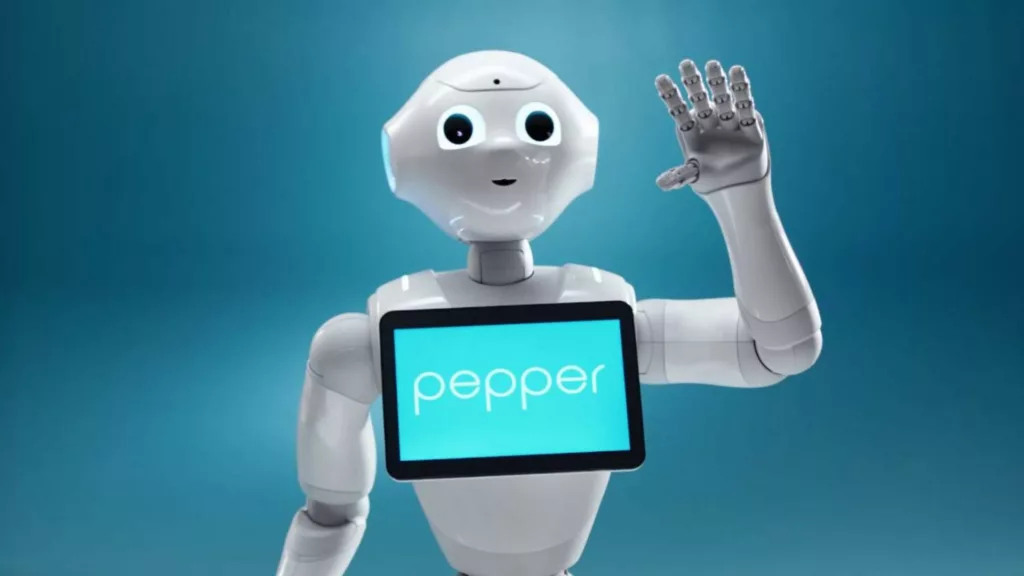
Demystifying AI: A Comprehensive Guide to Key Concepts and Terminology
This guide will cover the essential terminology that every beginner needs to know. Whether you are a student, a business owner, or simply someone who is interested in AI, this guide will provide you with a solid foundation in AI terminology to help you better understand this exciting field.

AI's Roles in Humanoid Robots
1- Sensors Integration
Humanoid robots are outfitted with a wide variety of sensors during the sensor fusion phase, which allows them to sense and comprehend their surroundings. These sensors include inertial measuring units (IMUs) for spatial awareness, LiDAR for depth sensing, and cameras for visual perception.
By combining information from many sensors, sensor fusion techniques provide a thorough picture of the robot’s environment, allowing it to move about, communicate, and make choices on its own. Utilizing methods like neural networks, Bayesian inference, and Kalman filtering, researchers create algorithms that combine sensor data in real-time to predict a robot’s posture, map its environment, and identify objects and impediments in its path.
2- Cognitive Abilities
Cognitively capable humanoid robots are capable of simulating human thought, reasoning, and decision-making. Researchers concentrate on creating algorithms that mimic important facets of human cognition, such as perception, attention, memory, learning, and reasoning, during the cognitive abilities phase.
The robot uses perception algorithms to decipher sensory input and derive relevant information from its surroundings. The robot’s attention processes allow it to block out distractions and concentrate on pertinent inputs. Robots with memory systems are better equipped to learn and adapt because they can store and retrieve knowledge. The robot can anticipate future events, determine causal linkages, and plan actions based on these predictions thanks to reasoning algorithms.
3- Machine Learning
Humanoid robots are able to learn and become more proficient over time thanks in large part to machine learning. Researchers use massive datasets to teach AI systems to identify patterns, objects, and human gestures during the machine-learning phase. Using labeled data, supervised learning approaches teach the robot how to identify things or carry out particular tasks.
Without direct supervision, the robot can find hidden patterns and structures in data thanks to unsupervised learning approaches. Through trial and error, the robot may learn from its experiences and optimize its behavior according to reinforcement learning techniques. Through repeated parameter updates in response to environmental feedback, the robot can adjust to novel circumstances and enhance its overall performance.
Software Layer's Activity in Humanoid Robots
Software development for humanoid robots has yielded important insights on managing complexity and advancing research endeavors throughout the course of the last eleven years.
The layer software is essential to the analysis of large volumes of data gathered from several sensors in humanoid robotics. It facilitates the effective processing and interpretation of sensor data by acting as an interface between higher-level algorithms and the hardware.
The layer software enables anthropomorphic robots to extract significant information from extensive, complex data sets—such as visual images, topographical maps, and sensory responses—through the use of advanced data analysis methods. This evaluation is vital for activities like object identification, navigation, and human-robot engagement, as it allows robots to make nimble decisions and swiftly adjust to shifting scenarios.
In the end, the layer software serves as the robot’s brain, turning raw sensor input into useful intelligence and improving the machine’s perception, comprehension, and interaction abilities with its surroundings.
1- Harnessing Spark Architecture for Massive Data Analysis
papAI platform, which uses Spark architecture to analyze large amounts of data, is an essential component of the software layer of humanoid robotics. Spark’s distributed computing capabilities make it possible to handle massive amounts of data produced by the robot’s sensors in an effective manner. This architecture is used by papAI to analyze many data kinds in real-time, including visual, spatial, and sensory data.
papAI uses sophisticated algorithms and parallel processing approaches to speed up the extraction of insights, allowing humanoid robots to navigate intricate surroundings, identify objects, and react precisely to changing circumstances.
2- Industrializing AI Models for Diverse Use Cases
papAI platform addresses a wide range of application cases across numerous sectors and helps industrialize AI models. Through the provision of an adaptable and expandable structure for the implementation of AI models, papAI facilitates the smooth incorporation of robotic solutions into a variety of operational settings. PapAI enables humanoid robots to carry out activities autonomously, optimize workflows, and boost efficiency in a variety of industries, including manufacturing, healthcare, and logistics.
Its all-inclusive toolkits and modular design make it easier for enterprises to create and implement AI applications, using humanoid robots to boost productivity and competitiveness.
3- Fostering Trust: How papAI Enhances Transparency in AI Algorithms
By encouraging openness and interpretability in AI algorithms, papAI helps people to comprehend and have faith in the choices made by humanoid robots.
papAI builds trust in the dependability and efficacy of AI-powered robotic systems by offering insights into the underlying processes and decision-making mechanisms. This promotes acceptance and adoption in a variety of sectors and disciplines.
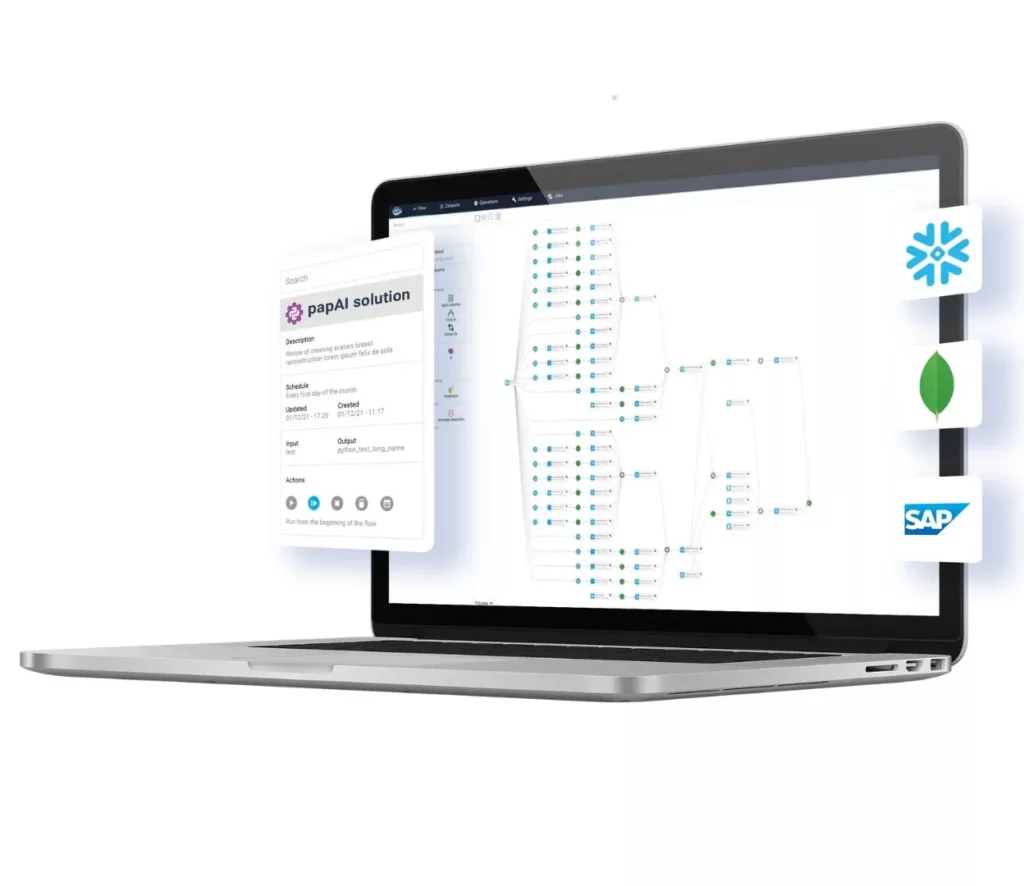
papAI offers both on-premise and SaaS deployment options, allowing businesses to choose the model that best fits their needs and budget, with the SaaS option offering lower upfront costs and greater scalability thanks to its cloud-based architecture.
Interested in discovering papAI?
Our AI expert team is at your disposal for any questions
How AI Transforms Predictive Maintenance in Defense Equipment
How AI Transforms Predictive Maintenance in Defense Equipment In a...
Read MoreHow to Scale AI Without Breaking Your Infrastructure in 2025
How to Scale AI Without Breaking Your Infrastructure in 2025...
Read More“DATATEGY EARLY CAREERS PROGRAM” With Noé Vartanian
“DATATEGY EARLY CAREERS PROGRAM” With Noé Vartanian Hello all, my...
Read More
